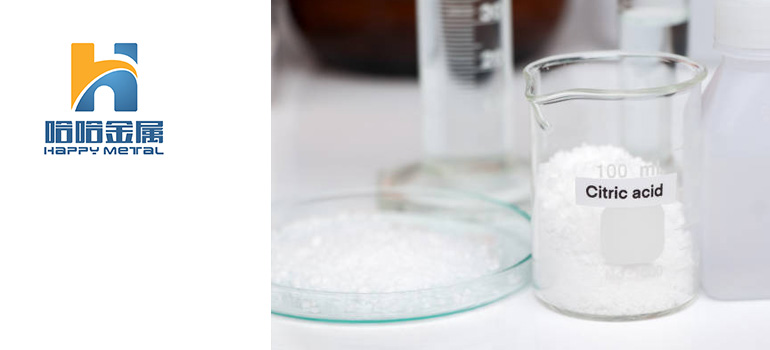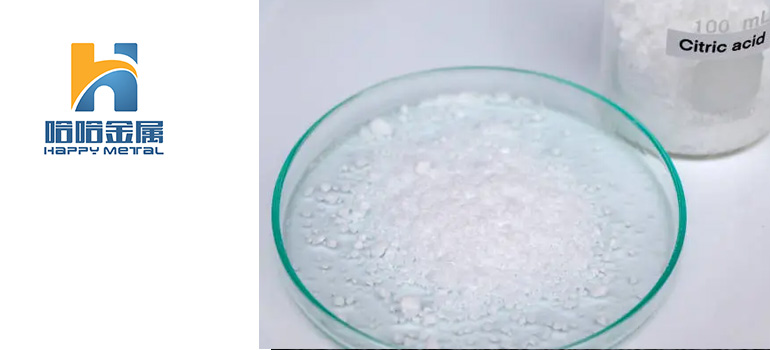Summary:
How Citric Acid Production is Revolutionizing the Food and Beverage Industry
The Role of Citric Acid Production in Modern Food Manufacturing
Innovations Driving the Future of Citric Acid Production
How Citric Acid Production Impacts Beverage Formulation
Market Trends and the Economic Impact of Citric Acid Production
The Role of Citric Acid Production in Modern Food Manufacturing
In today’s food manufacturing industry, citric acid plays an indispensable role. This naturally occurring organic acid is not just a common ingredient in kitchens, but it also serves crucial functions in a wide range of food processing applications. As consumers become increasingly concerned with food quality and safety, the use of citric acid is expanding and evolving.
Key Benefits of Citric Acid in Food Preservation
One of the most renowned benefits of citric acid is its remarkable preservative qualities. By adding citric acid to food products, manufacturers can significantly extend the shelf life of their products. This is because citric acid lowers the pH level of foods, creating an environment that is less hospitable to microbial growth. As a result, the risk of spoilage and deterioration is minimized. This preservative effect is particularly valuable in canned and frozen foods, where maintaining freshness and safety over extended periods is crucial.
Enhancing Flavor Profiles Through Citric Acid
In addition to its preservative properties, citric acid is also vital in flavor enhancement. It helps to intensify the sour taste in foods, making them taste fresher and more appetizing. This flavor-enhancing effect is especially prominent in beverages, candies, and sauces. By carefully adjusting the amount of citric acid used, manufacturers can achieve the perfect flavor balance that meets consumer expectations. Citric acid’s ability to enhance taste makes it a popular choice in a variety of food products, ensuring a more satisfying and enjoyable eating experience.
Citric Acid as a Natural Acidulant: Advantages and Applications
As a natural acidulant, citric acid offers numerous advantages over synthetic alternatives. Its natural origin aligns with modern consumer preferences for ingredients derived from natural sources. Citric acid is frequently used to adjust the acidity of foods, improving their texture and stability. For instance, in the production of fruit juices and soft drinks, citric acid helps control acidity levels, ensuring consistent and stable product quality. Additionally, citric acid’s applications extend to dairy products and canned foods, further enhancing overall product quality.
Overall, the multifaceted roles of citric acid in modern food manufacturing make it an essential ingredient. As technology advances and consumer demands evolve, the applications of citric acid will continue to expand, bringing further innovations and improvements to the food industry.
Innovations Driving the Future of Citric Acid Production

As the demand for citric acid continues to grow across various industries, including food and beverages, pharmaceuticals, and cosmetics, the production methods are evolving rapidly. Several cutting-edge innovations are shaping the future of citric acid production, enhancing efficiency, sustainability, and product quality.
Advances in Fermentation Technology
One of the most significant advancements in citric acid production is the development of more efficient fermentation technologies. Traditional fermentation methods, which rely on specific strains of mold (usually Aspergillus niger) to convert sugars into citric acid, are being optimized to increase yield and reduce production time. Modern techniques include the use of genetically modified strains and optimized fermentation conditions that enhance the productivity and consistency of the process. These innovations not only improve the overall efficiency of citric acid production but also help in scaling up production to meet the growing market demands.
Sustainable Practices in Citric Acid Production
Sustainability is becoming a central focus in citric acid production. Innovations in this area aim to reduce the environmental impact of the manufacturing process. For instance, researchers are exploring ways to utilize alternative feedstocks, such as agricultural waste or renewable biomass, to produce citric acid. This approach not only reduces reliance on traditional raw materials but also helps in managing waste more effectively. Additionally, there is a growing emphasis on minimizing energy consumption and water usage throughout the production process. Sustainable practices, such as recycling and waste management, are being integrated to lower the carbon footprint and enhance the environmental friendliness of citric acid production.
Cutting-Edge Methods for Increased Efficiency
The quest for greater efficiency in citric acid production is driving the adoption of several innovative methods. Advanced bioprocessing technologies, such as continuous fermentation and high-density fermentation, are being employed to maximize production output and streamline operations. These methods offer greater control over the fermentation process, reduce downtime, and increase overall productivity. Moreover, the implementation of automation and digitalization in production facilities allows for real-time monitoring and optimization, leading to more precise control of the production environment and improved product consistency.
Novel Extraction and Purification Techniques
Innovations in extraction and purification techniques are also playing a crucial role in advancing citric acid production. Traditional methods of separating citric acid from the fermentation broth involve extensive use of chemicals and complex procedures. Newer technologies, such as membrane filtration and chromatographic techniques, are being developed to make the extraction and purification process more efficient and cost-effective. These novel methods not only enhance the purity of the final product but also reduce the environmental impact associated with traditional purification processes.
Integration of Biotechnology and Synthetic Biology
The integration of biotechnology and synthetic biology is opening new frontiers in citric acid production. Researchers are exploring the use of engineered microorganisms that can produce citric acid more efficiently and with fewer byproducts. Synthetic biology approaches allow for the design and construction of custom microbial strains with optimized metabolic pathways for enhanced citric acid production. These innovations hold the potential to revolutionize the industry by providing more sustainable and high-yield production methods.
In summary, the future of citric acid production is being shaped by a range of innovative technologies and practices. From advanced fermentation techniques and sustainable practices to novel extraction methods and biotechnological advancements, these innovations are driving efficiency, sustainability, and quality improvements in citric acid production. As the industry continues to evolve, these cutting-edge developments will play a crucial role in meeting the increasing global demand for citric acid while addressing environmental and economic challenges.
How Citric Acid Production Impacts Beverage Formulation
Citric acid, a versatile organic acid, plays a pivotal role in the formulation of a wide array of beverages. From enhancing flavor profiles to ensuring product stability, citric acid’s impact on beverage formulation is both profound and multifaceted. Understanding these impacts is crucial for manufacturers aiming to create high-quality, market-ready products.
Citric Acid’s Role in Carbonated Drinks
In carbonated beverages, citric acid is used primarily to adjust acidity and enhance the overall taste experience. The tangy flavor of citric acid complements the carbonation, providing a refreshing and zesty profile that consumers enjoy. By carefully controlling the concentration of citric acid, beverage makers can achieve the desired level of tartness without overwhelming the drink’s other flavors. This balance is essential for maintaining consumer satisfaction and brand consistency across different product batches.
Moreover, citric acid helps stabilize the carbonation in fizzy drinks. Its ability to lower the pH of the beverage creates an environment that helps preserve the integrity of carbon dioxide bubbles. This results in a more consistent effervescence throughout the product’s shelf life, contributing to a better drinking experience.
Improving Shelf Life and Stability in Beverages
Citric acid significantly contributes to the shelf life and stability of beverages by acting as a natural preservative. Its acidic nature inhibits the growth of spoilage microorganisms and reduces the risk of fermentation in non-carbonated beverages. This preservation effect is particularly valuable in fruit juices, energy drinks, and other non-alcoholic beverages, where maintaining freshness and preventing spoilage are crucial.
Additionally, citric acid helps in stabilizing color and flavor compounds in beverages. It prevents the oxidation of sensitive ingredients, which can lead to off-flavors and color changes over time. By maintaining the stability of these components, citric acid ensures that the beverage remains visually appealing and flavorful throughout its shelf life.
The Influence of Citric Acid on Taste and Texture
Beyond flavor enhancement, citric acid plays a key role in influencing the texture and mouthfeel of beverages. In formulations where a certain level of acidity is desired, citric acid helps achieve the right balance between sweetness and tartness. This balance is crucial for developing beverages that are both enjoyable and refreshing.
In certain cases, citric acid can also affect the viscosity and mouthfeel of the drink. For instance, in syrup-based beverages or sports drinks, citric acid may influence the perceived thickness and smoothness. Manufacturers can adjust citric acid levels to fine-tune these textural aspects, ensuring that the beverage meets consumer preferences.
Citric Acid and Health Considerations in Beverage Formulation
Health-conscious consumers are increasingly looking for beverages with natural and functional ingredients. Citric acid, being a naturally occurring substance found in citrus fruits, aligns well with this trend. Its use in beverages not only enhances flavor and stability but also appeals to consumers seeking products with natural components.
However, it is important for manufacturers to consider the overall acidity of the beverage, as excessive citric acid can lead to an overly sour taste and potentially affect dental health if consumed in large quantities. Proper formulation ensures that citric acid levels contribute positively to the beverage without compromising taste or consumer well-being.
Regulatory and Labeling Aspects
From a regulatory perspective, the use of citric acid in beverage formulations is generally well-regulated. It is recognized as safe by various food safety authorities and is commonly included in ingredient lists under its common name, “citric acid.” Manufacturers must adhere to guidelines regarding permissible levels and labeling requirements to ensure compliance and transparency for consumers.
In conclusion, citric acid production has a significant impact on beverage formulation, influencing everything from flavor and stability to texture and health considerations. By leveraging the benefits of citric acid, beverage manufacturers can create products that meet consumer expectations for taste, quality, and safety while also aligning with industry standards and regulations.
Market Trends and the Economic Impact of Citric Acid Production
Citric acid, a key ingredient in various industries including food and beverages, pharmaceuticals, and cosmetics, is witnessing evolving market trends and significant economic impacts. Understanding these trends and their economic implications is crucial for stakeholders in the citric acid production and consumption sectors.
Growing Demand for Citric Acid in Food and Beverages
The demand for citric acid is experiencing steady growth, primarily driven by its extensive use in the food and beverage industry. As consumer preferences shift towards healthier and more natural products, citric acid’s role as a natural preservative and flavor enhancer has become increasingly prominent. The rise in popularity of processed and convenience foods, along with the expansion of the beverage sector, particularly in emerging markets, is fueling this demand.
Additionally, the trend towards clean label products—those with fewer artificial ingredients—has further boosted the use of citric acid, as it is derived from natural sources and is perceived as a safer alternative to synthetic additives. As food manufacturers strive to meet consumer expectations for transparency and natural ingredients, the need for citric acid is expected to remain strong.
Cost Factors and Pricing Trends in Citric Acid Production
The economics of citric acid production are influenced by several factors, including raw material costs, production technology, and market demand. The primary raw materials for citric acid production are carbohydrates derived from corn, sugar beets, or molasses. Fluctuations in the prices of these feedstocks can impact production costs and, consequently, the pricing of citric acid.
Advancements in production technology, such as improved fermentation processes and more efficient extraction methods, have the potential to reduce production costs. However, these innovations often require significant investment, which can affect the pricing structure in the short term. Additionally, the economic dynamics of supply and demand play a crucial role in determining citric acid prices. Periods of high demand or supply chain disruptions can lead to price volatility.
Regional Market Analysis and Opportunities
The citric acid market exhibits diverse regional trends and opportunities. North America and Europe have traditionally been the largest markets due to their well-established food and beverage industries and high levels of industrialization. However, the Asia-Pacific region is emerging as a significant growth area, driven by rapid industrialization, urbanization, and increasing consumer spending on processed foods and beverages.
Countries like China and India are expanding their production capacities and consumption of citric acid, presenting opportunities for both producers and investors. The growth in these regions is also supported by rising middle-class populations and changing dietary habits. As a result, market players are increasingly focusing on these regions to capitalize on growth opportunities and expand their market presence.
Economic Impact on the Citric Acid Supply Chain
The economic impact of citric acid production extends throughout the supply chain, from raw material suppliers to end-users. The production and processing of citric acid create jobs and stimulate economic activity in agricultural, industrial, and distribution sectors. Investments in production facilities and technological advancements contribute to economic growth and infrastructure development in regions where citric acid is produced.
Moreover, fluctuations in citric acid prices can have ripple effects across industries that rely on this ingredient. For example, changes in citric acid costs can impact the pricing of processed foods and beverages, potentially affecting consumer prices and purchasing behavior. Companies in the food and beverage sector must navigate these economic impacts while striving to maintain profitability and competitiveness.
Future Outlook and Market Dynamics
Looking ahead, the citric acid market is expected to continue evolving in response to changing consumer preferences, technological advancements, and economic conditions. Innovations in production technology, coupled with a growing emphasis on sustainability and natural ingredients, will likely shape the future of the citric acid industry. Additionally, emerging markets will play a pivotal role in driving growth and presenting new opportunities for market expansion.
In summary, the market trends and economic impact of citric acid production reflect a dynamic interplay of demand, cost factors, regional developments, and supply chain considerations. As the industry adapts to these trends and challenges, stakeholders will need to stay informed and strategically navigate the evolving landscape to capitalize on opportunities and address economic impacts.




